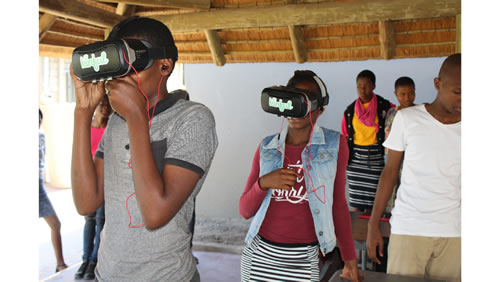Quality social-emotional learning (SEL) and effective special education (SpEd) programming look remarkably similar. Each relies on a positive, safe learning environment and touts activities geared toward student strengths and weaknesses. Both types of programming facilitate a group experience where individual outcomes are designed to be disparate, be recorded, and used to track growth. Because these two types of programming are similar in philosophy, it should come as no surprise that both SEL and SpEd can be enhanced and expanded by innovative edtech solutions—most notably, student-created virtual reality (360 VR videos).
The benefits of VR
VR is proving to be an effective engagement tool in diverse ways: visiting museums around the world, blasting off into space, etc. But VR does not have to be limited to geography and science classrooms. By using student-created, perspective-taking videos, VR can be a powerful experiential tool that aligns with and augments both SEL and SpEd outcomes.
When students put on a headset to view these types of videos, they are stepping into another life, another story. They will find connection in the familiar and discover meaning in what they perceive to be different. Students then begin to develop perspective-taking skills, resulting in newfound levels of relationship skills (communication), self-management (emotional control in response to a story), and social awareness (empathizing with the storyteller). As a bonus, viewing VR films is an incredibly immersive experience, making student engagement—often a legitimate challenge—easier to achieve.
Similarly, filming VR videos can be a vulnerable experience. When students get in front of the camera to share stories that are important to them, they’re developing self-awareness skills (recognizing personal values) and responsible decision-making skills (e.g., identifying problems and solutions around ethical responsibilities such as bullying intervention).
Do those skills sound familiar? That’s because they’re right in line with CASEL’s 5 major SEL competencies, along with the many goals associated with SpEd. In this way, VR can enhance the development of these competencies by providing teachers with new and exciting ways to approach their programming.
Why student-created VR works
The key is to give students the opportunity to be creators of the VR videos, thereby ensuring the content is genuine, relatable, and relevant to their peers in an impactful way. Imagine the empathy being fostered from viewing a first-person perspective VR video of being bullied, and the communication skills being developed from discussing the experience as a class-wide group afterwards. It can be cathartic for the storyteller, and an illuminating discovery of solidarity for the viewer.
SEL is quickly becoming a key educational initiative. According to an EdWeek Market Brief, nearly 90 percent of district leaders say they have already invested in social and emotional learning products, or plan to do so over the next year. While this individualized but group experience may not be new to many of our SpEd educators, many teachers are struggling to find exciting ways to integrate SEL into their curricula. VR provides a unique solution that energizes both students and teacher alike.
- 3 ways a modern data solution can improve student outcomes - May 7, 2024
- 7 principles of outdoor learning for early childhood - May 7, 2024
- Student-centered everything: ClassVR in special education - May 3, 2024

